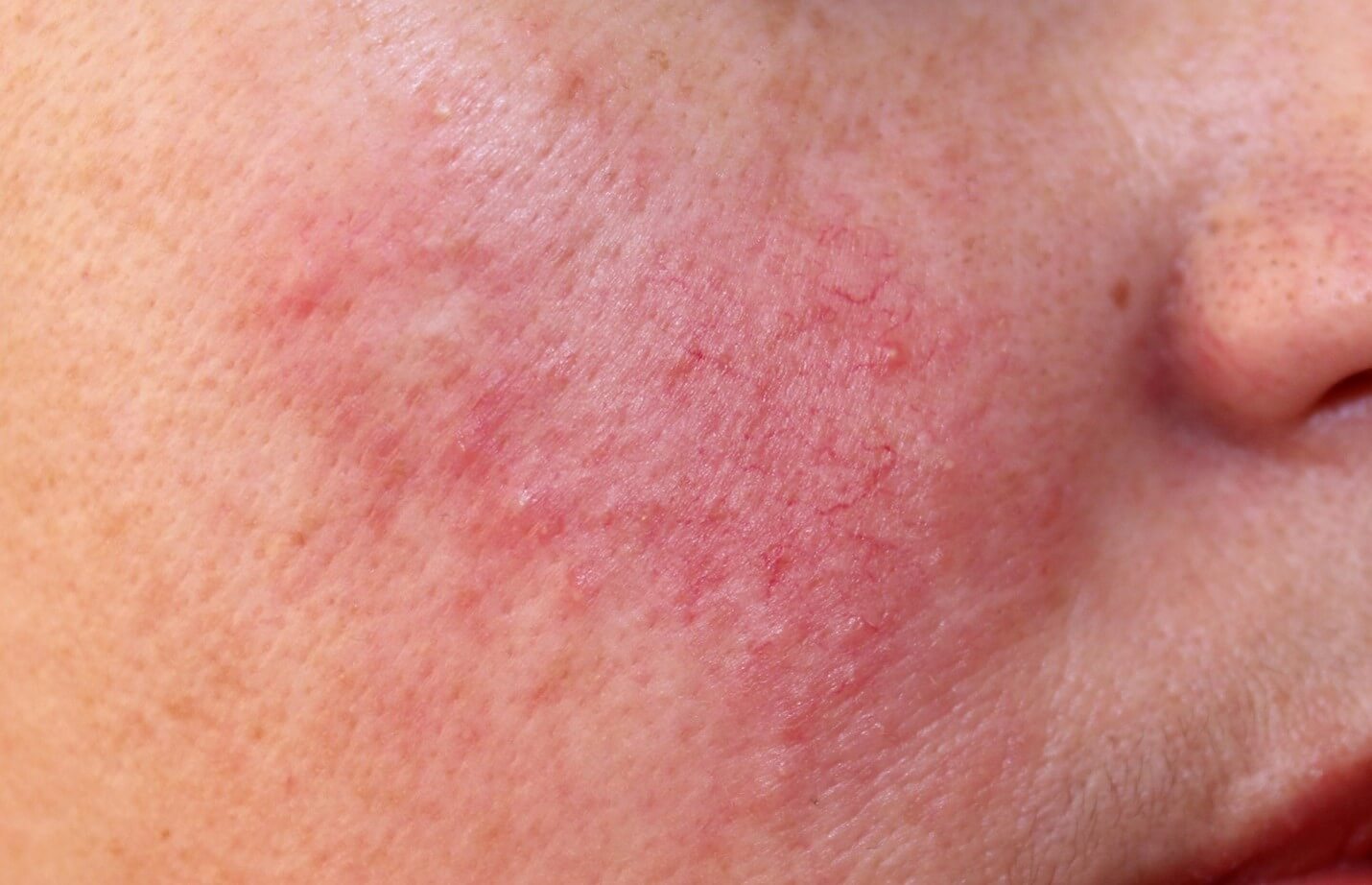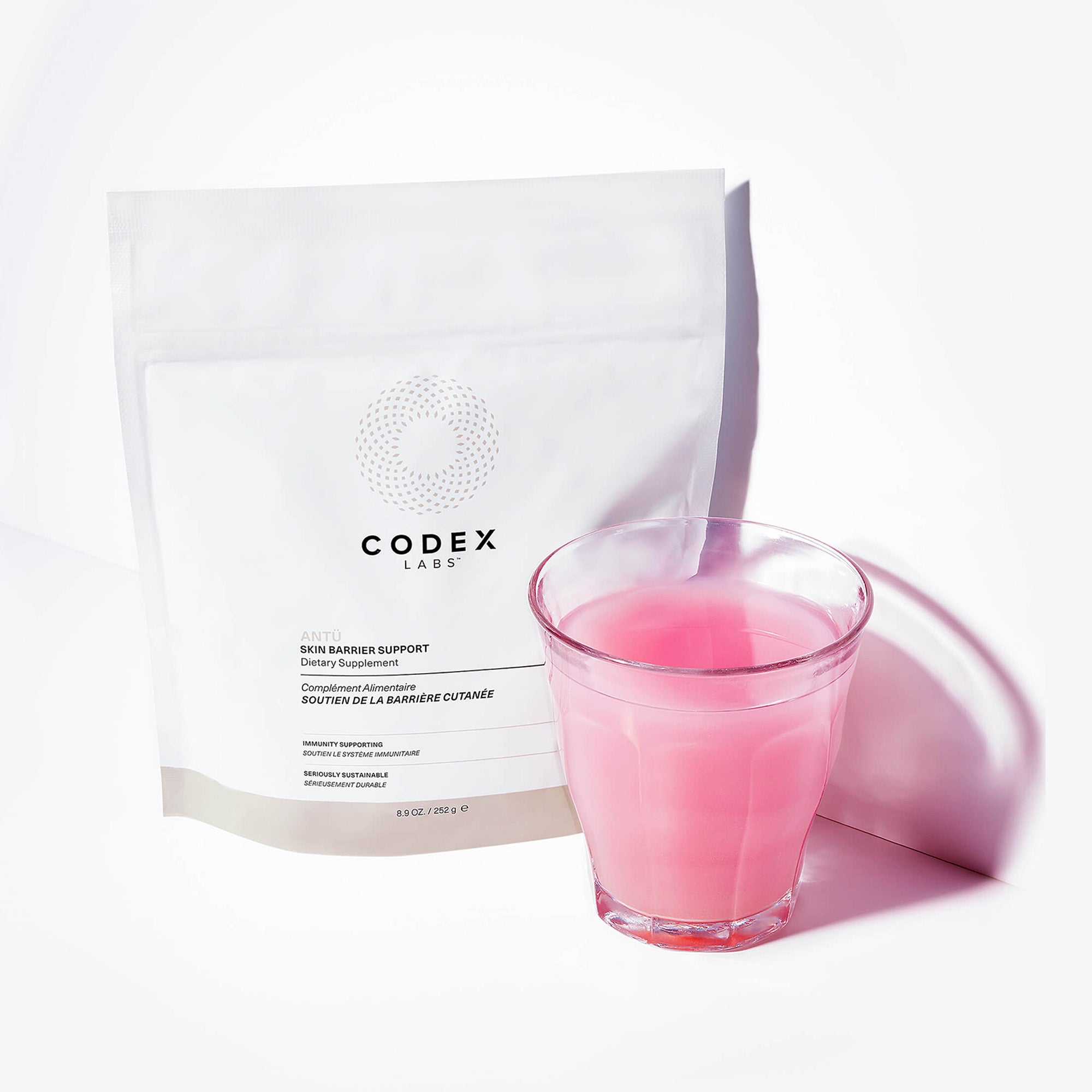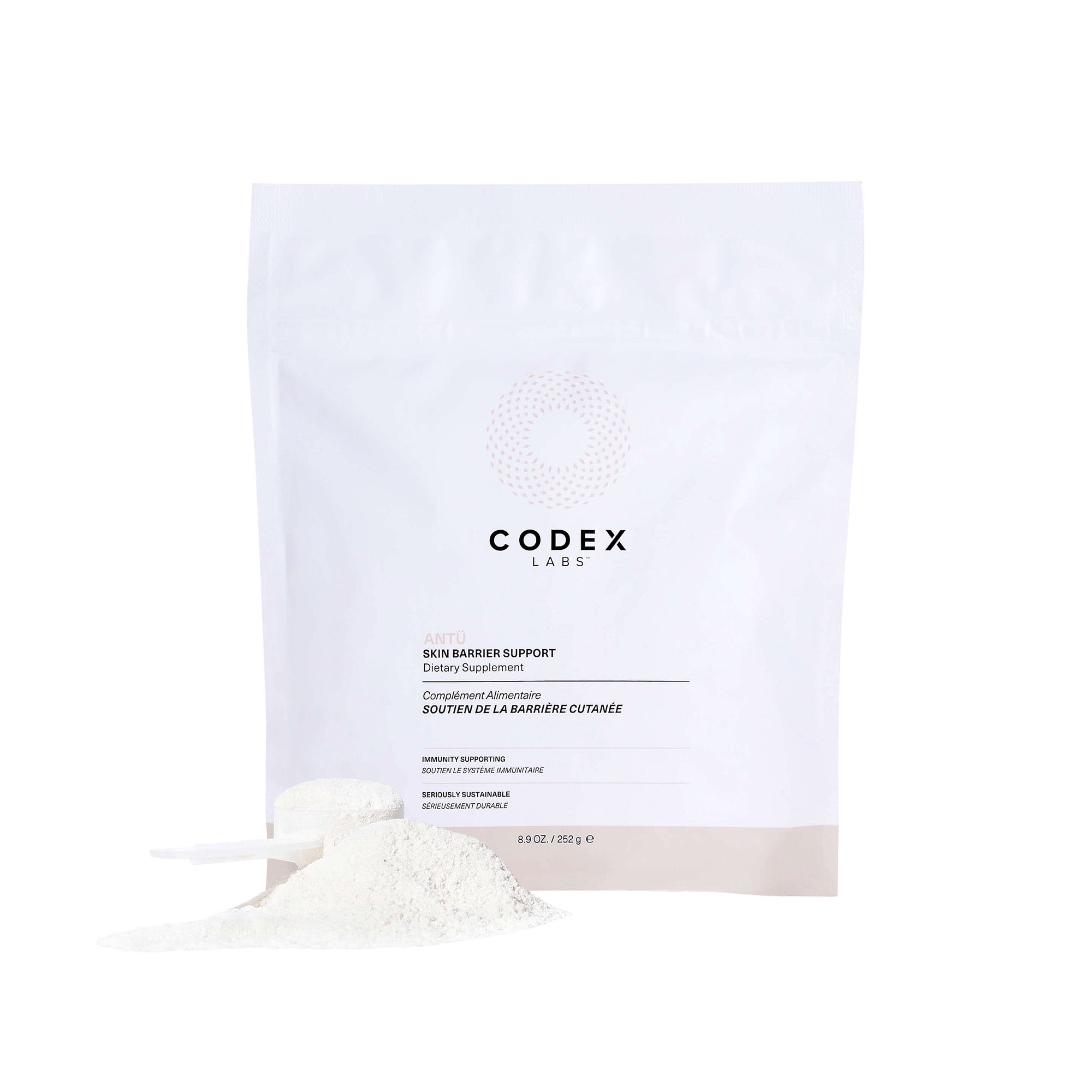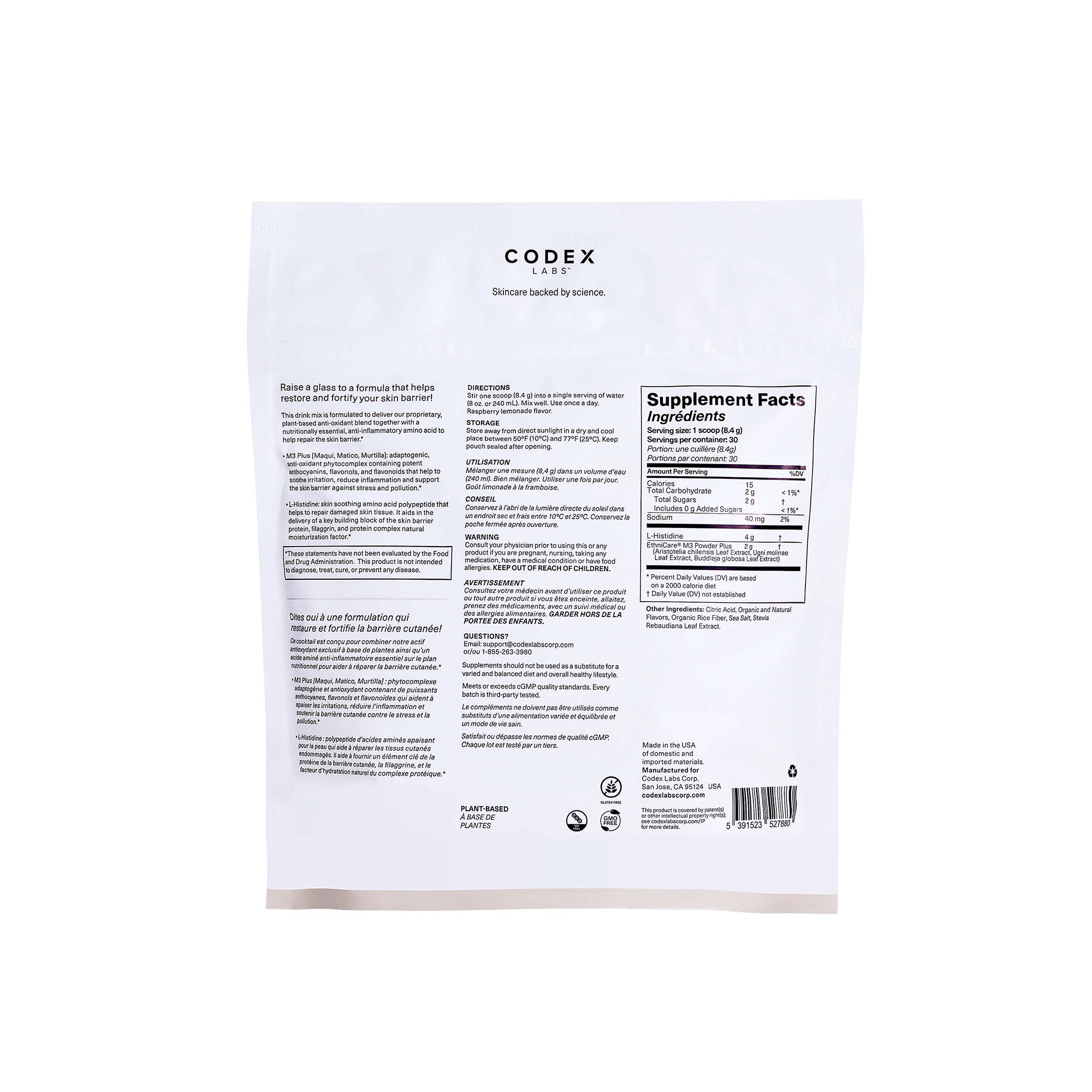Introduction
Rosacea is a chronic inflammatory skin condition that affects millions of people worldwide. It causes redness, visible blood vessels and, in a worst-case scenario, the formation of painful bumps on the face. Unlike other skin conditions, rosacea is characterized by persistent redness visible on the cheeks, nose, chin, and forehead. Those suffering from rosacea typically experience cycles of flare-ups which can be triggered by various environmental, dietary, or lifestyle factors, followed by remission.

The impact of rosacea goes beyond just the physical symptoms. It also tends to have a psychological impact on the sufferer by affecting their self-esteem and overall quality of life. Understanding the best skincare practices for rosacea, which this blog article will delve into, is essential for managing this condition effectively, thereby helping to improve the overall health and appearance of the skin.
What is Rosacea? [1]
Rosacea is more than just a simple skin irritation. It is a chronic inflammatory condition that primarily affects the face. Unlike acne or eczema, which can also cause redness and inflammation, rosacea is unique in its pattern of redness and its tendency to flare up in response to specific triggers. The exact cause of rosacea remains unclear, but it is believed to be a combination of genetic and environmental factors.
In general, rosacea typically first begins when the sufferer first realizes that their face tends to blush or flush (i.e., becomes red) more easily, compared to others. Over time, this redness can become more persistent, with visible blood vessels beginning to appear. In more severe cases, rosacea can cause swelling and thickening of the skin, particularly on the nose, a condition known as rhinophyma.
Causes of Rosacea [2]
The causes of rosacea are multifaceted, involving a complex interplay of genetic predisposition, immune system response, and environmental factors. One of the key triggers is sun exposure which can exacerbate the redness and inflammation characteristic of rosacea. Other common triggers include hot or spicy foods, alcohol, stress, and even certain skincare products.
Hormonal changes, particularly in women, can also play a role in the development and worsening of rosacea symptoms. This is why many people first notice signs of rosacea in their 30s or 40s, often coinciding with hormonal fluctuations.
Moreover, a growing body of research suggests that the skin's microbiome—the community of bacteria and other microorganisms living on the skin—may also be implicated in the development of rosacea. An imbalance of diverse microorganisms in the skin microbiome can lead to increased inflammation and flare-ups, making the management of this phenomenon critically important when it comes to treating rosacea.
Symptoms and Identification
Recognizing the symptoms of rosacea early is crucial for effective management. The most common symptom is persistent facial redness, often compared to a sunburn that doesn’t go away. This redness is usually centered on the central part of the face, including the nose, cheeks, chin, and forehead.
In addition to redness, individuals with rosacea may also experience:
- Visible blood vessels: Small, broken blood vessels may become visible on the skin, a condition known as telangiectasia.
- Bumps and pimples: Rosacea can sometimes cause red, pus-filled bumps that resemble acne. However, unlike acne, these bumps do not contain blackheads or whiteheads.
- Eye irritation: Some people with rosacea experience eye problems, such as dryness, irritation, and swollen eyelids. This condition is known as ocular rosacea.
- Thickened skin: In advanced cases, the skin may thicken, especially on the nose, leading to a bulbous appearance known as rhinophyma.
Distinguishing rosacea from other skin conditions is essential. Unlike acne, which often occurs in teenagers and can appear on the chest and back, rosacea is typically limited to the face and occurs in adults. Moreover, the redness associated with rosacea is more persistent than the occasional flush or blush experienced by those with sensitive skin.
Treatment Options
Managing rosacea requires a comprehensive approach that includes lifestyle modifications, skincare adjustments, and medical treatments. While there is no cure for rosacea, several treatments can help control symptoms and prevent flare-ups. These include:
- Topical Treatments: Prescription creams and gels that reduce redness and inflammation are often the first line of treatment for rosacea. These may include metronidazole, azelaic acid, or ivermectin. These treatments help calm rosacea symptoms by targeting the inflammation that underlies the condition.
- Oral Medications: For more severe cases, oral antibiotics such as doxycycline can be prescribed to reduce inflammation and treat bumps and pimples associated with rosacea. In some cases, isotretinoin, a powerful acne medication, may be used for severe cases that do not respond to other treatments.
- Laser Therapy: Laser and light-based therapies can help reduce the appearance of visible blood vessels and persistent redness. These treatments work by targeting the blood vessels beneath the skin’s surface, causing them to shrink and become less noticeable.
- Lifestyle Changes: Managing rosacea often involves identifying and avoiding personal triggers. Keeping a diary of foods, activities, and environmental conditions that precede flare-ups can be helpful. Sun protection is crucial, as UV exposure is a common trigger for many people with rosacea. Using a broad-spectrum sunscreen with an SPF of 30 or higher can help protect the skin and reduce flare-ups.
- Skincare Routine: Developing a gentle skincare routine is essential for managing rosacea. The best skincare for rosacea skin involves using products that soothe the skin, reduce inflammation, and protect the skin barrier. It’s important to choose products that are fragrance-free, alcohol-free, and free of other potential irritants.
Prevention Strategies [3]
Preventing rosacea flare-ups is often a matter of avoiding known triggers and maintaining a consistent skincare routine. Effective strategies for helping to keep rosacea managed and under control include:
- Sun Protection: Sun exposure is a leading trigger for rosacea. Wear a broad-spectrum sunscreen daily, even on cloudy days, and consider wearing a wide-brimmed hat when spending time outdoors.
- Dietary Adjustments: Some foods and drinks, such as spicy foods, alcohol, and hot beverages, can trigger rosacea flare-ups. Identifying and avoiding these triggers can help reduce the frequency of flare-ups.
- Stress Management: Stress is another common trigger for rosacea. Incorporating stress-reduction techniques such as yoga, meditation, or deep breathing exercises into your daily routine can help calm rosacea and reduce the likelihood of flare-ups.
- Gentle Skincare: Avoid harsh scrubs, exfoliants, and other skincare products that can irritate the skin. Instead, look for gentle, hydrating cleansers and moisturizers that are specifically formulated for sensitive skin.
Myths and Facts About Rosacea
Rosacea is, unfortunately, a widely misunderstood condition which oftentimes leads to the creation and spreading of various myths associated with the condition. Some of the more common misconceptions, together with the facts that debunk them, include:
Myth: Rosacea is caused by poor hygiene.
Fact: Rosacea is not caused by poor hygiene. It is a chronic inflammatory condition with a complex set of triggers, including genetics and environmental factors.
Myth: Rosacea is the same as acne.
Fact: While rosacea can cause pimples and bumps, it is not the same as acne. Rosacea is a distinct condition that often requires different treatment approaches.
Myth: Rosacea will go away on its own.
Fact: Rosacea is a chronic condition that typically requires ongoing management. While symptoms may improve at times, they can return if not properly managed.
Myth: You shouldn’t moisturize rosacea-prone skin.
Fact: Moisturizing is essential for rosacea-prone skin. A good moisturizer helps protect the skin barrier and prevent dryness, which can trigger flare-ups.
Personal Stories and Testimonials
Recommended Products for Managing Rosacea
When it comes to managing rosacea, using the right products is crucial. Here are some recommended products that can help calm rosacea and reduce redness:
Gentle Cleanser: Look for a cleanser that is fragrance-free and formulated for sensitive skin. Avoid foaming cleansers, which can be drying and irritating.
Soothing Moisturizer: Choose a moisturizer that is rich in calming ingredients like niacinamide, ceramides, and hyaluronic acid. These ingredients help restore the skin barrier and lock in moisture.
Sunscreen: A broad-spectrum sunscreen with an SPF of 30 or higher is essential for protecting rosacea-prone skin from UV damage.
Anti-Redness Serum: Consider adding a serum specifically designed to reduce redness and inflammation. Ingredients like azelaic acid and green tea extract can be particularly effective.
Barrier Repair Cream: If your skin is particularly sensitive, a barrier repair cream can help strengthen the skin’s natural defenses and prevent moisture loss.
FAQ
How do you soothe a rosacea flare-up on your face? To soothe a rosacea flare-up, start by applying a cold compress to reduce inflammation. Follow with a gentle, hydrating moisturizer to calm the skin. Avoid using any harsh products or scrubs during a flare-up, as these can exacerbate irritation.
What is a gentle treatment for rosacea? A gentle treatment for rosacea includes the use of topical medications prescribed by a dermatologist, such as metronidazole or azelaic acid, combined with a simple skincare routine. Look for products labeled as non-comedogenic and free of fragrances and alcohol.
What are the best soothing ingredients for rosacea? The best soothing ingredients for rosacea include niacinamide, which helps reduce redness and inflammation; ceramides, which restore the skin barrier; and green tea extract, known for its anti-inflammatory properties. Hyaluronic acid is also beneficial for maintaining moisture levels.
What not to use when you have rosacea? When you have rosacea, it’s important to avoid products with alcohol, fragrance, menthol, and exfoliating agents like salicylic acid or benzoyl peroxide. These ingredients can irritate the skin and trigger flare-ups. Also, avoid physical exfoliants like scrubs or brushes.
What is the fastest way to reduce rosacea redness? The fastest way to reduce rosacea redness is to apply a cold compress to the affected area, followed by a calming, hydrating serum or moisturizer. Using a green-tinted primer or concealer can also help neutralize redness for an immediate cosmetic fix.
Conclusion
Managing rosacea requires a comprehensive approach that includes a gentle skincare routine, avoiding known triggers, and using medical treatments when necessary. While rosacea is a chronic condition, it is possible to calm rosacea and reduce its symptoms with the right approach. If you struggle with persistent redness or other symptoms of rosacea, consider consulting with a dermatologist to develop a personalized treatment plan.
Call to Action
If you happen to suffer from rosacea flare-ups and are serious about wanting to effectively manage this troublesome chronic inflammatory skin condition, Codex Labs has some great news for you! Our team of R&D experts who specialize in developing effective solutions for treating and managing chronic inflammatory skin disorders have developed diagnostic tools, together with topical skincare and dietary supplement products for addressing the triggers and symptoms associated with rosacea, from both the inside and outside of your body.
Diagnostics:
- DECODE.MYSKIN® DNA Test for evaluating inflammation intensity (actual and potential) within the body
- DECODE.MYHEALTH® Vitamin DNA Test for evaluating vitamin efficiency and deficiency within the body
Both tests come with a 30-minute genetic counseling session for added insight and guidance.
Supplements:
- ANTU® SKIN BARRIER SUPPORT DIETARY SUPPLEMENT: When it comes to effectively tackling rosacea-triggered symptoms from within the body, this dietary supplement is what your skin has been craving. With powerful antioxidants (M3+) for quenching inflammation-triggering free radicals, plus nature’s very own L-histidine amino acid that helps support skin barrier strength and moisture retention within the skin, this beneficial tonic works to relieve symptoms associated with rosacea from inside your body.
Topical Skincare:
- SHAANT® BALANCING FOAMING CLEANSER: A supremely gentle cleanser for use by those with oily-prone skin to remove dirt, grime, and makeup, while helping to relieve excess oil-triggering inflammation.
- BIA® GENTLE CLEANSING OIL 2.0: A daily use cleanser for those suffering with dry, parched skin.
- ANTU® REFRESHING GEL CLEANSER: A skin barrier-supporting cleanser designed to soothe irritation as it purifies and refreshes rosacea-prone skin.
- SHAANT® PORE PURIFYING FACE SCRUB: For those suffering with rosacea-induced bumps and pustules (Papulopustular rosacea), this cleanser contains just the right amount of salicylic acid to gently exfoliate/remove impurities from deep within the pores without stripping desperately needed moisture and sebum from the skin barrier.
- ANTU® SKIN BARRIER SERUM: An award-winning, antioxidant-rich serum that has been clinically proven to hydrate/moisturize the skin while helping to support and maintain the skin barrier.
- ANTU® SKIN BARRIER DAYTIME DEFENSE MOISTURIZER: Enriched with our patented AntüComplex®, proprietary M3 antioxidants, Hyaluronic Acid, and Vitamin A, this clinically proven moisturizer defends against oxidative stress-causing environmental pollutants and UV rays while improving hydration, lessening pore appearance, and mitigating damage caused by environmental stress.
- ANTU® OVERNIGHT REPAIR CREAM: A nourishing cream infused with our patented AntüComplex® that restores collagen, hydrates, softens, and fortifies the skin barrier to help protect it against exposure to airborne pollutants and damaging UV rays.
Remember, when it comes to managing rosacea it’s critically important to: (1) be gentle, (2) hydrate/moisturize, and (3) repair/strengthen the skin barrier. Following this simple, yet effective, skincare regimen should bring you the soothing relief your irritated, inflamed, rosacea-prone has been craving.
References:
- https://www.rosacea.org/patients/all-about-rosacea
- https://www.niams.nih.gov/health-topics/rosacea
- https://www.aad.org/news/prevent-rosacea-flareups
Remember, when it comes to managing rosacea it’s critically important to: (1) be gentle, (2) hydrate/moisturize, and (3) repair/strengthen the skin barrier. Following this simple, yet effective, skincare regimen should bring you the soothing relief your irritated, inflamed, rosacea-prone has been craving.
References:
- https://www.rosacea.org/patients/all-about-rosacea
- https://www.niams.nih.gov/health-topics/rosacea
- https://www.aad.org/news/prevent-rosacea-flareups





